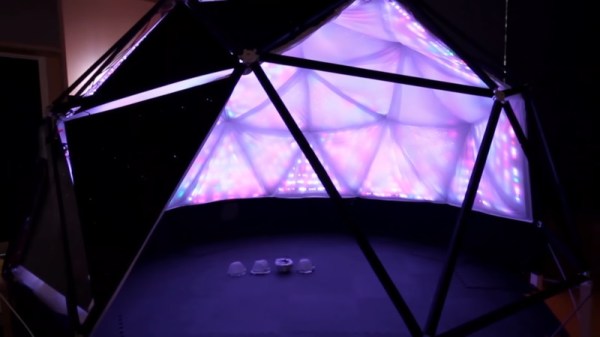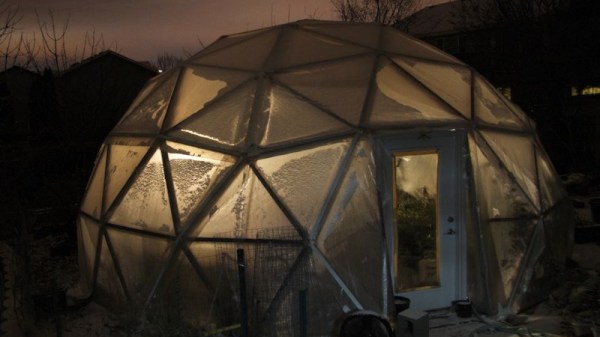Not too far away from where this is being written is one of Uncle Sam’s NATO outposts, a satellite earth station for their comms system. Its most prominent feature is a radome, a huge golf-ball-like structure visible for miles, that protects a large parabolic antenna from the British weather. It makes sense not just for a superpower to protect its antennas from the elements, and [saveitforparts] is doing the same with a geodesic dome for his radio telescope experiments. But what effect does it have on the received signal? He’s made a video to investigate.
The US military radome is likely constructed of special RF-transparent materials, but this smaller version has a fibreglass skin and an aluminium frame. When he compares internal and external sky scans made with a small motorised satellite TV antenna he finds that the TV satellites are just as strong, but that the noise floor is higher and the frame is visible in the scan. It’s particularly obvious with such small dish, and his planned larger array should improve matters.
We would be curious to know whether an offset-fed dish constructed to minimise ground noise reaching the LNB, would improve matters further. It’s no surprise that the frame doesn’t impede the TV satellites though, as it is many wavelengths wide at that frequency. The video is below the break, and meanwhile, we featured the antenna he’s using here in 2023.













